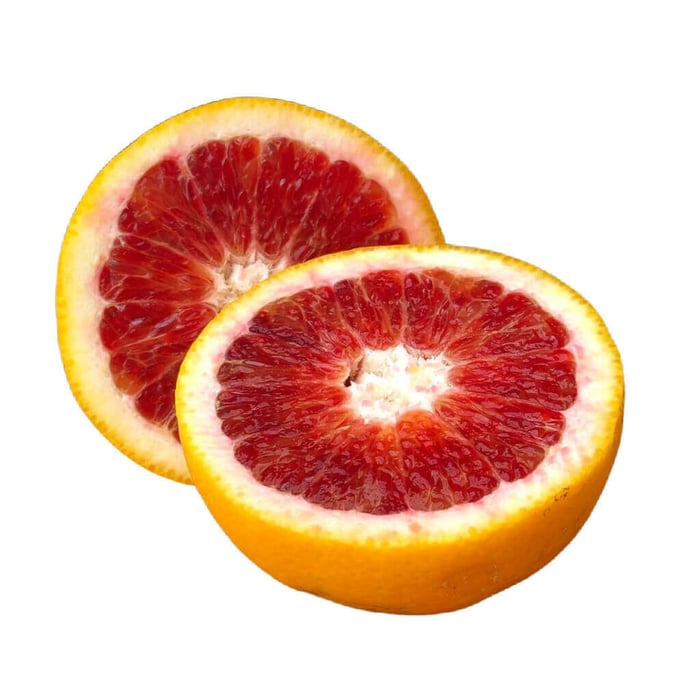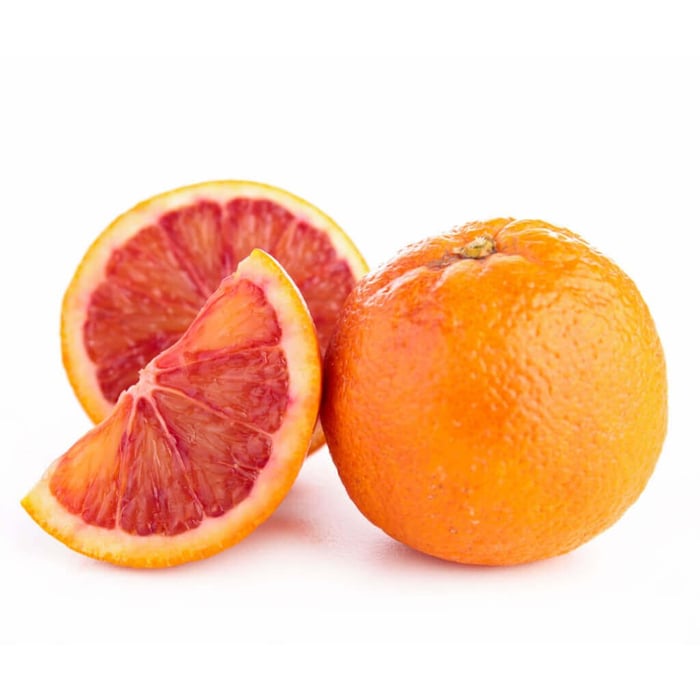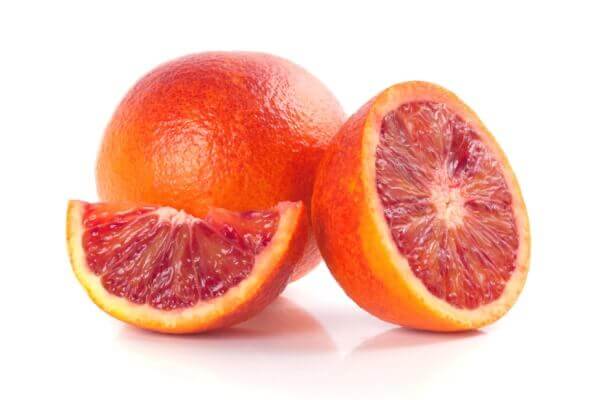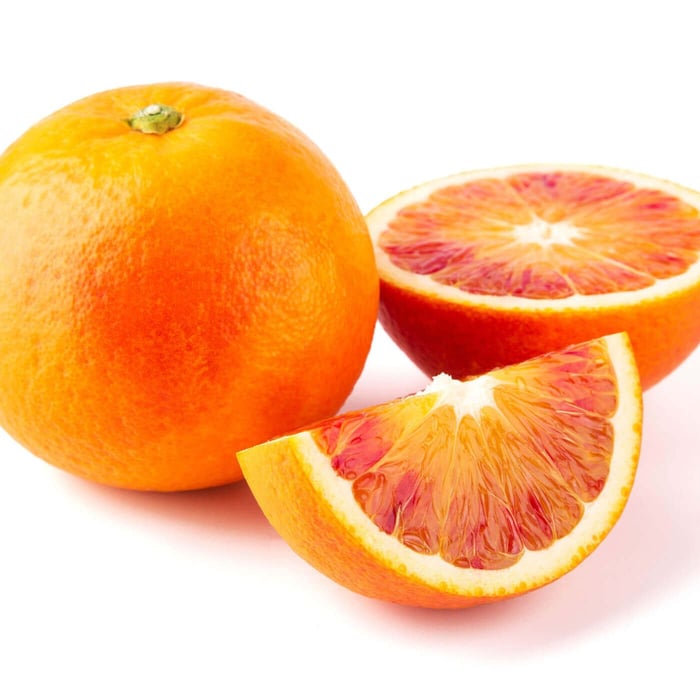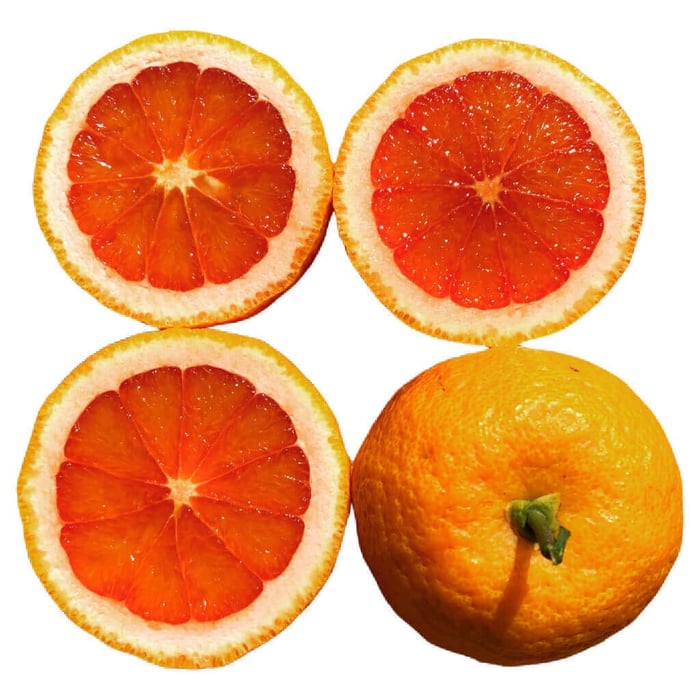All About Blood Orange Trees: History, Flavor, Cultivation, and Varieties
When it comes to citrus trees, there's one group that stands out for its striking appearance and remarkable taste – blood orange trees. Blood oranges have deep crimson flesh, tangy-sweet flavor, and rich history. They have earned a special place in the hearts of citrus lovers. The three most common types of blood oranges are the Italian Tarocco, the Spanish Sanguinello, and the Italian Moro.
History and Origins:
The history of blood orange trees traces back to the Mediterranean region, where they are believed to have originated centuries ago. Ancient texts mention citrus fruits with red flesh, suggesting that blood orange trees may have been cultivated as early as the Roman Empire. Some theories are that, like navel oranges, they actually originated in China. It was not until the 19th century that blood oranges gained prominence in Europe, particularly in Italy and Spain.
One of the earliest known blood orange trees is the 'Moro Blood Orange,' which hails from Sicily, Italy. Legend has it that the Moro blood orange originated as a mutation of the sweet orange, resulting in its distinctive red hue and robust flavor. Over time, other varieties, such as the 'Tarocco' and 'Sanguinello,' were developed, each with its own unique characteristics and regional variations.
Flavor Profile:
What sets blood orange trees apart from their conventional counterparts is their appearance and also their complex flavor profile. The flesh of a blood orange ranges from deep crimson to maroon, due to the presence of anthocyanins – natural pigments that develop in response to cooler temperatures. For this reason, blood oranges grow best in areas that get cool night temperatures, which help add the red color to the flesh. Beyond their striking color, blood oranges offer a balance of sweetness and tartness, with notes of raspberry and berry-like undertones. Whether enjoyed fresh, juiced, or incorporated into culinary dishes, the distinct flavor of blood oranges adds depth and sophistication. Some delicious recipes that use blood oranges include Ottolenghi’s Blood Orange & Fennel Salad with Burrata and Melissa Clark's Upside-Down Blood Orange Cake.
Cultivation in Containers:
While blood orange trees thrive in Mediterranean-like climates, they can also be successfully grown in pots, making them an option for home gardeners with limited space. When growing blood orange trees in containers, it's essential to select an appropriately sized pot with adequate drainage to prevent waterlogging. Your pot should be no more than twice the size of the rootball. We recommend 10-14 pots for the "primo" size, which is our starter sized trees. Use a nutrient-rich potting mix, such as our DIY Primo Potting Soil, to provide the necessary nutrients for healthy growth.
Choose a sunny location for your blood orange tree, as they require 6-8 hours of full sun. Water consistently, ensuring that the soil remains evenly moist but not waterlogged. During the growing season, fertilize your blood orange tree with Romeo Plant Food or G&B Organics Fruit and Citrus Tree Fertilizer to promote vigorous growth and fruit development.
Best USDA Zones for Growing:
Blood oranges thrive in USDA hardiness zones 9-11, where they can enjoy the warm temperatures and ample sunlight necessary for optimal growth and fruit production. In these regions, blood orange trees can be planted directly in the ground, allowing them to reach their full potential and yield abundant harvests. However, for those in colder climates, growing blood oranges in containers provides a viable solution, allowing them to be moved indoors during the winter months to protect them from frost and freezing temperatures.
Varieties and Characteristics:
The world of blood oranges is as diverse as it is captivating, with each variety offering its own unique set of characteristics and flavor profiles. Among the most popular varieties are:
1. Moro Blood Orange: The Moro blood orange is a fascinating citrus variety renowned for its striking appearance and unique flavor profile.
One of the most captivating features of the Moro blood orange is its deep crimson flesh, which sets it apart from other oranges. The peel of the Moro blood orange typically retains the familiar orange hue, but it often has a reddish blush, hinting at the vibrant color waiting inside.
The Moro blood orange has a complex and tangy-sweet flavor profile. It offers a perfect balance of sweetness with a refreshing tartness.. The distinctive flavor of the Moro blood orange is often described as more intense and robust compared to other orange varieties, making it a favorite for citrus fans.
In addition to its remarkable taste and visual appeal, the Moro blood orange packs a nutritious punch. Like other citrus fruits, it is an excellent source of vitamin C, providing a healthy dose of antioxidants that support immune health and overall well-being. Additionally, blood oranges contain flavonoids, which have been linked to various health benefits, including heart health and inflammation reduction. Incorporating Moro blood oranges into your diet can be a flavorful way to boost your intake of essential nutrients and enjoy their wholesome goodness.
The Moro blood orange's bold flavor and stunning color make it a versatile ingredient in both sweet and savory dishes. Its vibrant juice can be used to add a burst of citrusy goodness to beverages, sauces, marinades, and desserts. From refreshing cocktails and tangy salad dressings to decadent cakes and pastries, the Moro blood orange lends its distinctive flair to a wide range of culinary creations. Whether you're savoring it fresh, juicing it for a refreshing drink, or incorporating it into your favorite recipes, the Moro blood orange offers endless culinary possibilities.
2. Bream Tarocco Blood Orange:
The Tarocco Blood Orange is a remarkable citrus variety, and a prized cultivar within the blood orange group. It is believed to have originated in Italy, particularly in the region of Sicily. This variety is known for its distinctive sweetness, juiciness, and rich flavor profile.
The exterior of the Bream Tarocco Blood Orange often sports a slightly rough, orange-colored rind with a blush of red. However, what truly sets it apart is the breathtaking colors when you cut into it. The inner flesh ranges from deep crimson to maroon, with occasional streaks of red. Its appearance alone can make it a centerpiece in any fruit display.
One of the most captivating aspects of the Bream Tarocco is its flavor. It strikes a perfect balance between sweet and tangy, with a nuanced depth that's hard to find in other citrus varieties. The sweetness is often compared to that of raspberries, while its acidity adds a refreshing zestiness. This harmonious blend of flavors makes it a versatile fruit for both eating fresh and using in culinary creations like marinades, and salad dressings, while the segments can be enjoyed on their own or incorporated into desserts, salads, and seafood dishes.
The Sanguinelli blood orange is a stand-out citrus variety renowned for its dark red appearance and unique flavor profile. It belongs to the citrus sinensis species and is characterized by its deep crimson-colored flesh, which distinguishes it from other oranges.
The most distinctive feature of the Sanguinelli blood orange is its deep red to burgundy-colored flesh. The outer skin may appear similar to other oranges, ranging from a bright orange hue to a reddish blush, depending on ripeness and environmental conditions.
Sanguinelli blood oranges offer a flavor profile that is both sweet and tangy, with noticeable hints of raspberry and berry-like notes. The unique combination of sweetness and acidity makes it a favorite among citrus enthusiasts and chefs alike.
Like many citrus varieties, Sanguinelli blood oranges have a specific season when they are at their peak freshness and flavor. Typically, they are harvested from late winter to early spring, although the exact timing can vary depending on the region and climate.
The Smith Red Blood Orange is a vibrant and flavorful citrus fruit known for its deep red flesh and tangy-sweet taste. This unique variety is a favorite, offering both ornamental beauty and delicious fruit.
The Smith Red Blood Orange originated in Italy, where it was first discovered growing in the gardens of a nobleman named Smith. Its exact origins are shrouded in mystery, but it is believed to be a natural mutation of the traditional blood orange.
The Smith Red Blood Orange typically features a slightly pebbled, reddish-orange rind that may have hints of green. Inside, the flesh is orange streaked with red- not quite as deep as the Sanguinelli or Moro blood orange, but very appealing and unique.
Beyond its stunning appearance, the Smith Red Blood Orange offers a delightful flavor that balances sweetness with a pleasant tartness. Its juice is rich and aromatic, with distinct notes of raspberry and berry-like undertones, similar to most blood oranges. Whether enjoyed fresh or used in cooking, this orange adds a burst of flavor to dishes and beverages.
Like other citrus fruits, the Smith Red Blood Orange is packed with essential vitamins and nutrients. It's a good source of vitamin C, providing a boost to the immune system and promoting overall health. Additionally, it contains antioxidants such as flavonoids, which help protect cells from damage caused by free radicals.
5. Vaniglia Sanguigno Blood Orange:
The Vaniglia Sanguigno, or Blood Vanilla Orange, is a captivating citrus variety known for its unique flavor and stunning appearance. This orange variety is a mutation of the Tarocco blood orange, originating in Italy. Its name, "Vaniglia Sanguigno," is derived from its distinct aroma reminiscent of vanilla and its deep red flesh, which resembles blood when fully ripe.
One of the most striking features of the Vaniglia Sanguigno is its vibrant pink-red flesh, which sets it apart from traditional oranges.
The unique flavor and stunning appearance of Vaniglia Sanguigno blood oranges make them remarkable and definitely a conversation piece. Their vibrant color adds a pop of visual appeal to salads, desserts, and cocktails. The flavor of this low-acid orange is reminiscent of an orange creamsicle, surprisingly sweet and not very tart like a typical orange. From refreshing citrus salads to tangy marinades and flavorful sauces, the culinary possibilities are endless with this exceptional fruit.
Vaniglia Sanguigno blood oranges are typically in season from late winter to early spring, offering a welcome burst of freshness during the cooler months.


